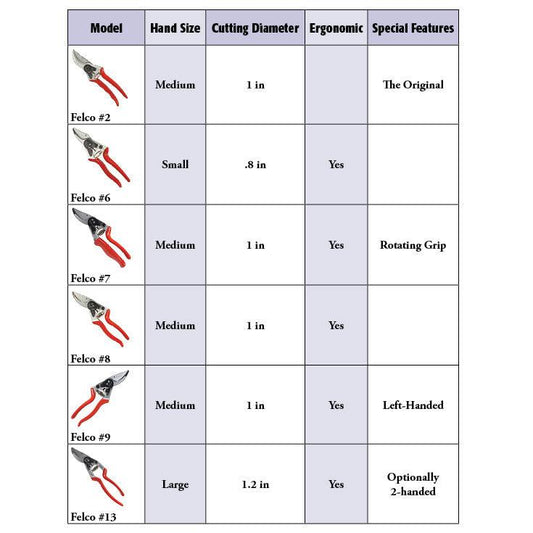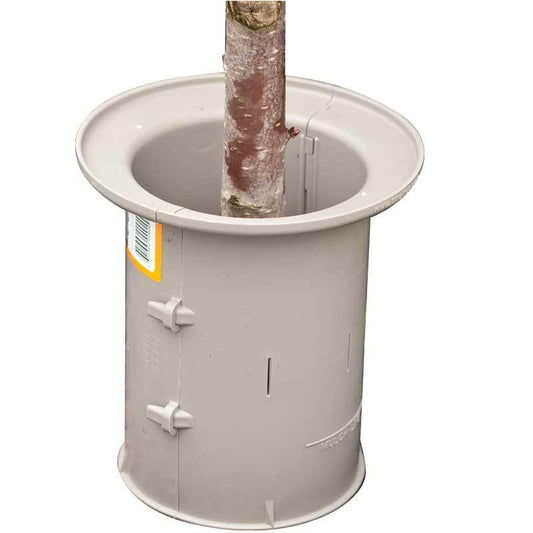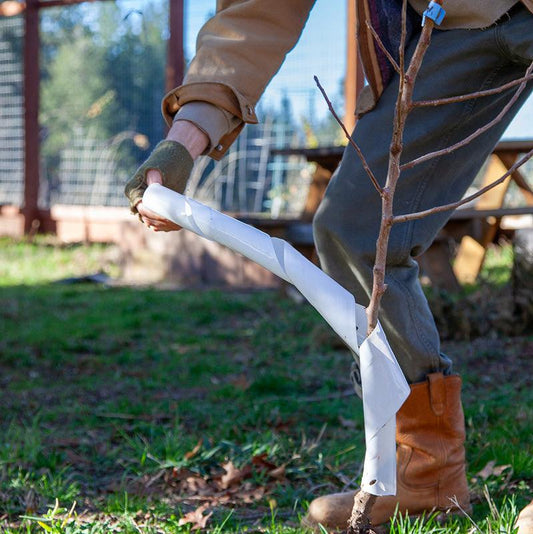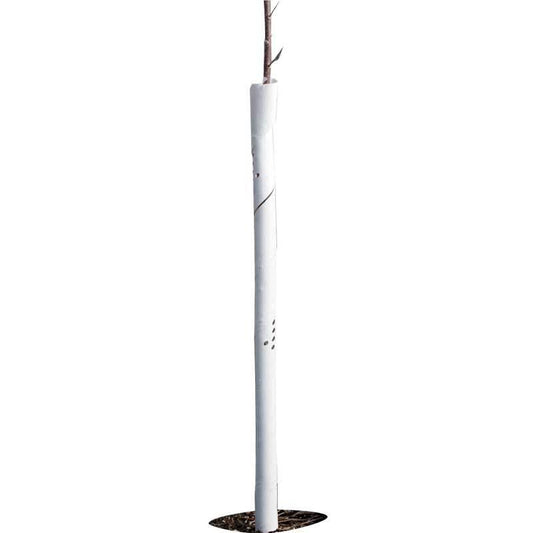What Are Chill Hours for Fruit Trees? Understanding Chilling Hours and How They Affect Growth
When planning a fruit tree orchard or garden, most people check their USDA growing zone to see which plants can survive winter temperatures. However, an equally important factor for fruit tree success is chill hours—also called chilling hours.
What Does Chill Hours Mean?
What does chill hours mean? It refers to the number of hours a deciduous fruit tree spends in temperatures between 32°F and 45°F (0°C to 7.2°C) during its dormant season. These chilling hours are necessary to break dormancy and ensure normal flowering, leafing, and fruit production in spring. Without enough chill, fruit trees may bloom poorly, produce low yields, or fail to fruit at all.

Chill Hours for Fruit Trees
Different varieties of fruit trees—such as peach trees, blueberries, and apple trees—have unique chill hour requirements. To choose the right varieties for your region, it’s important to first determine your local chill hours by zip code.
Grow Organic recommends using local climate data or agricultural extensions to find your estimated chill hours by zip code. Once you know your area’s average, you can shop confidently from their wide selection of fruit and nut trees and bare root tree varieties that match your chill zone.
Why Chill Hours Matter
If a fruit tree doesn’t receive the required chill hours, its buds may open unevenly or fail to open altogether. This can weaken the tree and significantly reduce both fruit quality and yield.
Understanding chill hours for fruit trees in your area helps you make informed planting decisions, whether you’re growing for personal enjoyment or commercial production. Selecting varieties that meet your region’s chilling requirements ensures healthier trees and more reliable harvests. Learn more about the concept of chill hours and their importance in this detailed guide.
Supporting Healthy Fruit Production
In addition to meeting chilling requirements, proper care is essential for long-term productivity. For best results:
- Learn the best pruning techniques for apple, peach, and cherry trees
- Follow guidelines on how and when to fertilize fruit trees
- Choose appropriately rated bare root trees for your chill hours and climate

The Science Behind Chill Hours for Fruit Trees
Understanding what are chill hours for fruit trees is essential for growing healthy, productive trees. Chill hours refer to the cumulative time a deciduous fruit tree spends between 32°F and 45°F during its winter dormancy. These cold conditions are necessary for triggering biological processes that allow the tree to break dormancy and bloom properly in spring.
When trees don’t receive enough chill—especially in warm winter climates—they may have delayed blooming, poor fruit set, or reduced fruit quality. This is particularly important for trees like peaches, which have specific chilling requirements. In such areas, choosing low chill varieties like multi-grafted low chill peach trees ensures better adaptation and yield.
Find the Right Tree for Your Region
Understanding your climate zone, local chill hours, and tree-specific requirements allows you to select and grow trees that thrive in your environment. In cold zones, it’s also important to follow best practices for protecting sensitive plants during winter—here’s a helpful resource on how to protect certain tender summer flowering plants from freezing winter temperatures.
By taking chill hours into account, gardeners can make informed choices, improve fruit production, and adapt more effectively to changing climate zones and warming trends.

How Chill Hours Vary by Climate Zones
Chill hour accumulation differs across climate zones, with colder regions getting more hours and warmer areas like Southern California or parts of Florida receiving fewer. These variations in freezing temperatures affect which trees will thrive in your region.
To make the best selection, it’s crucial to match a tree’s chilling requirement with your local conditions. This USDA Hardiness zone map can help you determine your growing zone, and the Mississippi State University provides a chill hours calculator where you can estimate chill hours by zip code.
Why Are Chill Hours Important?
Beyond affecting bud break and fruit yield, chill hours play vital roles in the overall health and lifecycle of fruit and nut trees:
- Dormancy Regulation: Chill hours ensure trees remain dormant long enough to conserve energy and protect against winter damage. This period is crucial for preparing trees to resume growth at the right time.
- Uniform Flower and Leaf Development: Adequate chilling supports consistent flower bud formation and timely leaf growth, which are essential for healthy photosynthesis and nutrient production.
- Improved Fruit Quality: Meeting chill requirements helps optimize fruit size, flavor, and sweetness, contributing to a more successful harvest.
- Enhanced Pest and Disease Resistance: Proper dormancy reinforced by sufficient chill hours strengthens trees’ natural defenses, reducing vulnerability to pests and diseases that exploit early or irregular growth phases.

Risk of Low Chill Hours in Cold Climates
Now, you might be thinking, "Why not just plant trees with low chill requirements in cold climates? Wouldn't that guarantee enough cold weather for the trees?" While it might seem like a viable solution, it's essential to understand that not all fruit and nut tree varieties have the same chill hour requirements. Moreover, some trees may have a chilling requirement that is simply too low to thrive in a particular region's climate.
-
Unsuitable Varieties: In cold climates, planting fruit trees with low chill hour requirements might seem like a practical approach. However, this strategy may limit the variety of trees you can grow. Some of the most popular fruit and nut trees, such as apples, peaches, cherries, and almonds, often require a substantial number of chill hours to thrive. Choosing low-chill varieties might mean sacrificing your favorite fruit or nut tree types.
-
Insufficient Chilling: Even if you select low-chill varieties, there's no guarantee that they will receive enough chilling hours in extremely cold climates. Climate variability, especially in recent years due to climate change, can disrupt the consistency of chill hours. Trees that rely on a limited number of chill hours may break dormancy too early and suffer the consequences.
-
Environmental Factors: While chill hours are a crucial factor in tree dormancy, they are not the sole determinant. Other environmental conditions, such as temperature fluctuations, humidity, and frost events, can also affect dormancy and tree health. Low chill hour trees in cold climates may still be susceptible to premature budding if these factors are not adequately addressed.
In our video, Fruit Trees – A Selection Guide, we explain that a low-chill tree in a high-chill area would break dormancy too soon and be damaged, or even killed, by the cold weather.

Chill Hours and Different Types of Fruit Trees
Stone Fruits (Peaches, Plums, Cherries, etc.)
Stone fruits, such as peaches, plums, and cherries, have specific chilling requirements that vary widely among different species and particular cultivars. Generally speaking, the chilling requirement for these fruits is essential to ensure they can bear fruit successfully, as they need a certain number of hours at chilling temperatures between 32°F and 45°F to thrive.
When selecting fruit trees, it's important to consider local conditions, including cold hardiness, as well as to consult the nearest weather station to determine the potential chill units available for optimal growth and good crop yields.
Pome Fruits (Apples, Pears, etc.)
Pome fruits, such as apples and pears, have specific chilling requirements that differ from those of stone fruits, often requiring a precise number of hours at chilling temperatures to ensure successful bloom and fruit set. Generally speaking, these chill hours depending on the particular cultivar and can vary widely, with some apple varieties needing high chill hours for optimal growth.
When selecting fruit trees, it's important to consider local conditions, including cold hardiness, as well as the nearest weather station data to accurately assess the potential chill units available for a good crop in different temperature ranges.
Nut Trees and Their Chill Hour Needs
Nut trees, such as almonds and walnuts, have distinct chilling requirements that play a critical role in their ability to bear fruit successfully. Generally speaking, these chill hours can vary widely depending on the particular cultivar and are essential for the trees to meet their chilling requirement during the dormant period.
When selecting fruit trees or nut varieties, it is vital to consider local conditions, including cold hardiness and data from the nearest weather station, to ensure that the available chill units align with the necessary number of hours at chilling temperatures for optimal fruit production.

In Summary
Understanding what are chill hours for fruit trees is key to successful cultivation, including for varieties like apple trees. Simply put, chill hours are the cumulative cold hours a tree needs during dormancy to break rest and prepare for healthy growth and fruit production. These hours are a critical part of a tree’s life cycle.
While low-chill varieties may seem appealing in colder climates, it’s important to match your fruit and nut trees’ chilling requirements to your region’s climate. Selecting trees suited to your local chill hours for fruit trees and using protective measures when necessary helps ensure a healthy, productive orchard.
By knowing what chill hours mean and evaluating your local conditions, you can enjoy a plentiful harvest regardless of your climate zone.
Here are some guides to low chill (less than 300 hours) fruit trees:
- Apples – Anna, Low Chill multi-graft, Dorsett and Sundowner
- Apricots – Gold Kist or Katy
- Plums – Methley, Burgundy, Satsuma or Mariposa
- Pluot – Dapple Supreme
- Cherry – Royal Lee, Minnie Royal and Royal Crimson
- Peach – Red Baron, Low Chill multi-graft, Saturn, Babcock, Sauzee Swirl, Mid-Pride, and Eva's Pride
- Nectarine – Spice Zee Nectaplum, Double Delight or Snow Queen
- Pears – most require over 300 chill hours. Asian pears require the lowest chill hours of all pears.
- Figs, Pomegranates, Quince, Persimmons – all require 300 or less chill hours
- Special Hybrids – Spice Zee Nectaplum or Flavor Delight Aprium
The majority of fruit and nut trees require higher chill hours. The selection is huge, so no matter where you live, there is a perfect fruit tree to choose from. Choose wisely and look forward to an orchard that lives happily ever after. For complete orchard information, see the book California gardeners rave about, The Home Orchard, written by experts from the University of California. You can also explore nut trees and fruit trees for sale to find the perfect addition to your garden.

FAQs: What Are Chill Hours for Fruit Trees? How to Check Chill Hours by Zip Code for Better Growth
What are chill hours for fruit trees?
Why do peach trees need cold hours?
How do chilling requirements vary among fruit trees?
How do I determine my trees' chill hours?
What happens if my trees don't get enough chill hours?
Can warm temperatures interfere with my fruit trees' chill hours?
How does the Utah model help with estimating chill hours?
What is the impact of frost on fruit crops?
How does the dormant period affect my fruit trees?
Can a Research and Extension Center help me understand chill hours?
What happens if my trees don’t rest properly during the dormant period?
How do freezing temperatures impact my fruit trees?
Why is it important to understand the chilling requirements of my fruit trees?
Can fruit trees break buds too early in warm climates?
You can find information on specific rootstock for our trees in the Fruit and Nut Tree Characteristics database. For more details on chilling requirements, visit UC ANR's guide to chilling units or check the TAMU Chill Hour Calculator.
Related Fruit Tree Care Resources
Explore these helpful Grow Organic articles for deeper understanding and advanced care techniques:
-
Pruning Young Fruit Trees: Why Shorter Is Better
Learn why keeping young fruit trees short builds a stronger structure and encourages healthy branching. -
Fruit Tree Dormancy
Understand how dormancy works and why it’s a vital phase for your trees’ health and spring readiness. -
High‑Density Planting and Pruning Fruit Trees for the Home Orchard
Ideal for gardeners with space constraints—get strategies for maximizing yield with smart planting and pruning. -
Pruning Fruit Trees: Choose Training Shapes for Apple, Peach, Cherry Trees
Discover different training shapes (e.g., open center vs. central leader) suited to various fruit tree species. -
Reasons for Summer Pruning Fruit Trees
Learn when and why summer pruning is beneficial—especially for controlling growth and enhancing fruit quality.
More in the Grow Organic Resource Center
-
Fruit Trees Resource Center
A comprehensive hub featuring curated videos, articles, and guides on all aspects of fruit tree care—from selection and planting to pruning and long-term maintenance.








12 comments
I came across chill hours first about 18 months ago after our move from the snow belt to SC. I found no real official tally of the hours anywhere locally so started a spreadsheet to do so myself. I used the ‘anything under 45’ calculation because we don’t go below freezing very often. Last year was fine – I came up with 850 hours which was fine for most of my trees. This year I have seen some limitations with straight hours. We had cold at the end of November, then record warmth in December before returning to a cold January. Consequently I restarted the calculation in January. Some of my low chill trees thought Dec warmth was spring so started flowering – not many flowers but still some. In January alone I have tallied over 300 hours. However, the trees don’t use a spreadsheet and I think the number of chill days might need to be a part of the calculation but haven’t seen that anywhere.
Kate
Terry, I would bring the tree in before it gets below freezing. I would leave it inside until you are ready to move it out in the spring. I would not move it in and out in the spring, just wait until your temps are above freezing.
Hi, So I have a Black Mission Fig tree and live in zone 6b what if I let it outside in it’s container until it got down to the lowest temperature allowed before killing it. Then brought it indoors dormant and place in a sunny window until spring? Then acclimate it to the outdoors once danger of frost is over or move it daily?
Sharon, chill is usually reported in hours and not weeks. There are charts available online or through your local ag extension that will get you approximate chill hours for your area.
How does “weeks” of chill translate into hours of chill? I am trying to figure out my bulb requirement of 12 weeks. In my area, I get about 6 hours per day at night during the winter. Daytime temps are usually in the 50”s and 60”s. I average about a 1000 hours of chill a year. Love to hear from you all.